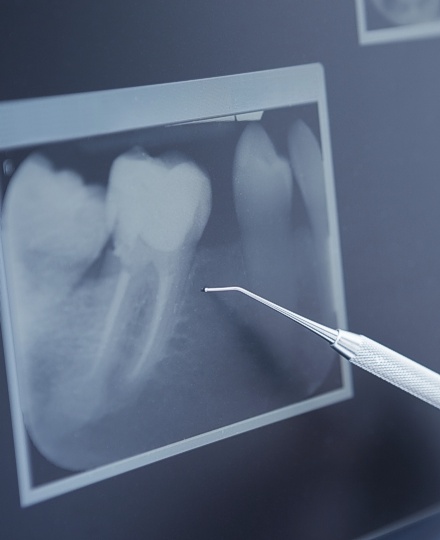Root Canal Treatment
Root canal treatment is needed for two main reasons. The first is infection. A hole in a tooth is a common cause of pulp infection. The decay eats away the tooth until it reaches the root canal. This allows bacteria to infect the pulp. Antibiotics can't get to infections inside teeth. The infection can kill the nerve of the tooth and leave it infected with an "abscess".
The second reason for root canal treatment is damage to the pulp that can't be fixed. A severe knock or a fractured tooth can damage the nerve. So can a lot of restoration, such as several fillings placed in the same tooth over a period of time.
An infection in the pulp can affect the bone around the tooth. This can cause an abscess to form. The goal of root canal treatment is to save the tooth by removing the infected or damaged pulp, treating any infection, and filling the empty root canals with a soft rubber material called gutta percha.
Root canal treatment can be carried out in one or two visits. Firstly the dentist will numb your tooth and the surrounding area. Next the dentist will put a small hole in the back or top of the tooth so that they can get to the infected pulp. A rubber dam is then usually fitted. This is a simple rubber square fitted temporarily whilst treating the tooth, that keeps the area clean and free of saliva.
The dentist will then measure the length of your roots using an x-ray or a clever machine called an apex locator. Once the dentist knows the length of your root they will clean the canals with tiny files and special cleaning solutions. Once they are happy the tooth is cleaned they will dry the tooth and place a root filling. This is a rubber material that is warmed and put into the tooth so that it fills the inside of the tooth where the nerve used to live. The tooth can then be filled as normal or crowned. Crowns are often placed after root canal treatment to protect the tooth as it can be weak and fragile.
Root canal treatment is a difficult procedure and is not always successful, but it is the only way to save an infected tooth. Your dentist will explain the risks, any possible complications and alternatives to you.

